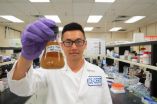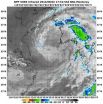(Press-News.org) It's easy to guess why it doesn't take long to learn to avoid certain behaviors and embrace others. But how do we know what drives these predilections? A study led by Aimee Dunlap at the University of Missouri-St. Louis, and co-authored by University of Minnesota researcher David Stephens, offers insight into the evolutionary underpinning of animals' innate ability to quickly absorb critical life lessons.
Animals are flooded with stimuli, but survival often depends on their ability to form specific associations that enhance fitness while ignoring others entirely. Psychologists have a name for it: the Garcia Effect. In the 1960s, John Garcia showed that rats are primed to learn certain associations (taste and illness) and not others (light and illness).
"Different learning abilities evolved in different environments, and we had a hypothesis about how that should happen," says Stephens. "What we wanted to know the general properties that cause natural selection to favor some learned associations over others."
Dunlap and Stephens tested their hypothesis using techniques associated with experimental evolution. "Experimental evolution is different than artificial selection," says Stephens. Instead of selecting for specific traits, the idea is to create specific environments and ask whether they generate selection in the predicted way.
By testing their hypothesis over 40 generations of fruit flies in environments designed to evoke specific associations (between quinine and color or odor). They were able to produce some populations of flies who learned quinine-color associations, and others who learned quinine-odor association. This confirmed the hypothesis that statistical reliability across many generations of selection determines what animals can learn and what they can't.
"We're coming to know quite a lot about the underlying neural and molecular biological mechanisms that cause associations to form," says Stephens. "If you know odor makes a stronger association for this population and color for that population, that raises a really interesting mechanistic question of what's happening inside the neural systems of these flies -- how these different learning abilities arise."
INFORMATION:
The study was published online in the Proceedings of the National Academy of Sciences July 28. Dunlap conducted much of the research for this study while pursuing a doctorate in Ecology, Evolution and Behavior at the University of Minnesota.
Evolutionary explanation for why some lessons more easily learned than others
2014-08-04
ELSE PRESS RELEASES FROM THIS DATE:
Enhancing biofuel yields from biomass with novel new method
2014-08-04
RIVERSIDE, Calif. — A team of researchers, led by Professor Charles E. Wyman, at the University of California, Riverside's Bourns College of Engineering have developed a versatile, relatively non-toxic, and efficient way to convert raw agricultural and forestry residues and other plant matter, known as lignocellulosic biomass, into biofuels and chemicals.
The patent-pending method, called Co-solvent Enhanced Lignocellulosic Fractionation (CELF), brings researchers closer to solving the long elusive goal of producing fuels and chemicals from biomass at high enough yields ...
NASA catches the brief life of Tropical Storm Nakri
2014-08-04
The low pressure area known as System 96W struggled to organize for a week and finally became Tropical Storm Nakri on August 2 as the Suomi NPP satellite passed overhead. Nakri had a short life, however, as it dissipated the following day while approaching South Korea.
On Saturday, August 2, at 9 p.m. EDT, Nakri's maximum sustained winds were near 40 knots (46 mph/74 kph). At that time it was centered about 100 nautical miles southeast of Kunsan Air Base, near 35.0 north and 125.0 east. It was moving to the north at 14 knots (16.1 mph/21.9 kph).
When NASA-NOAA's Suomi ...
NASA sees Typhoon Halong's eye wink
2014-08-04
As Super Typhoon Halong tracks north through the Northwestern Pacific Ocean, NASA's Aqua and Terra satellites have seen the powerful storm appear to wink at space as it developed and "opened" an eye and then close its eye as clouds moved over it. That wink appears to be a sign of eyewall replacement in the powerful storm.
On August 2 at 01:45 UTC (August 1 at 9:45 p.m. EDT) NASA's Terra satellite captured a visible image of a wide-eyed Super Typhoon Halong moving through the Northwestern Pacific Ocean. At the time of the image, Halong was a powerful Category 5 Super Typhoon ...
No-power Wi-Fi connectivity could fuel internet of things reality
2014-08-04
Imagine a world in which your wristwatch or other wearable device communicates directly with your online profiles, storing information about your daily activities where you can best access it – all without requiring batteries. Or, battery-free sensors embedded around your home could track minute-by-minute temperature changes and send that information to your thermostat to help conserve energy.
This not-so-distant "Internet of Things" reality would extend connectivity to perhaps billions of devices. Sensors could be embedded in everyday objects to help monitor and track ...
NASA's IBEX and Voyager spacecraft drive advances in outer heliosphere research
2014-08-04
San Antonio -- Aug. 4, 2014 -- Scientists yesterday highlighted an impressive list of achievements in researching the outer heliosphere at the 40th International Committee on Space Research (COSPAR) Scientific Assembly in Moscow.
"Between NASA's Voyager and IBEX missions, it's an incredible time for outer heliospheric science," says Dr. Dave McComas, IBEX principal investigator and assistant vice president of the Space Science and Engineering Division at Southwest Research Institute, who also will be recognized with a 2014 COSPAR Space Science Award at the assembly. "Ten ...
Children in immigrant families more likely to be sedentary
2014-08-04
Immigrant children from all racial and ethnic backgrounds are more likely to be sedentary than U.S.-born white children, according to a new study by sociologists at Rice University. The researchers said their findings should remind pediatricians and parents of children in immigrant families to encourage physical activity.
The research revealed that children of immigrants from all racial and ethnic backgrounds have lower levels of physical activity than U.S.-born white children, even when adjustments are made for socio-demographic and neighborhood characteristics. A low ...
New tools advance bio-logic
2014-08-04
Researchers at Rice University and the University of Kansas Medical Center are making genetic circuits that can perform more complex tasks by swapping protein building blocks.
The modular genetic circuits engineered from parts of otherwise unrelated bacterial genomes can be set up to handle multiple chemical inputs simultaneously with a minimum of interference from their neighbors.
The work reported in the American Chemical Society journal ACS Synthetic Biology gives scientists more options as they design synthetic cells for specific tasks, such as the production of ...
GW researcher reveals how amphibians crossed continents
2014-08-04
There are more than 7,000 known species of amphibians that can be found in nearly every type of ecosystem on six continents. But there have been few attempts to understand exactly when and how frogs, toads, salamanders and caecilians have moved across the planet throughout time.
Armed with DNA sequence data, Alex Pyron, an assistant professor of biology at the George Washington University, sought to accurately piece together the 300-million-year storyline of their journey.
Dr. Pyron has succeeded in constructing a first-of-its-kind comprehensive diagram of the geographic ...
How should flood risk assessments be done in a changing climate?
2014-08-04
Growing consensus on climate and land use change means that it is reasonable to assume, at the very least, that flood levels in a region may change. Then why, ask Rosner et al. in a new study, do the dominant risk assessment techniques used to decide whether to build new flood protection infrastructure nearly always start with an assumption of "no trend" in flood behavior?
In an argument grounded in an analysis of the inherent limitations of statistical analyses, the authors suggest that researchers' typical starting assumption that flood behavior is not changing—even ...
Insights on whale shark populations and evidence for their historic rise and recent decline
2014-08-04
In the largest study on the genetics of whale sharks conducted to date, researchers found that the world's biggest fish likely exist in 2 distinct populations with minimal connectivity between the Indo-Pacific and the Atlantic Ocean. The findings suggest that mixing of whale sharks between the Indian and Atlantic was and is rare.
The Molecular Ecology investigators also found a significant and likely recent population expansion, but a very recent bottleneck might have gone undetected as genetic diversity at Ningaloo Reef in Australia has declined during 5 consecutive ...





